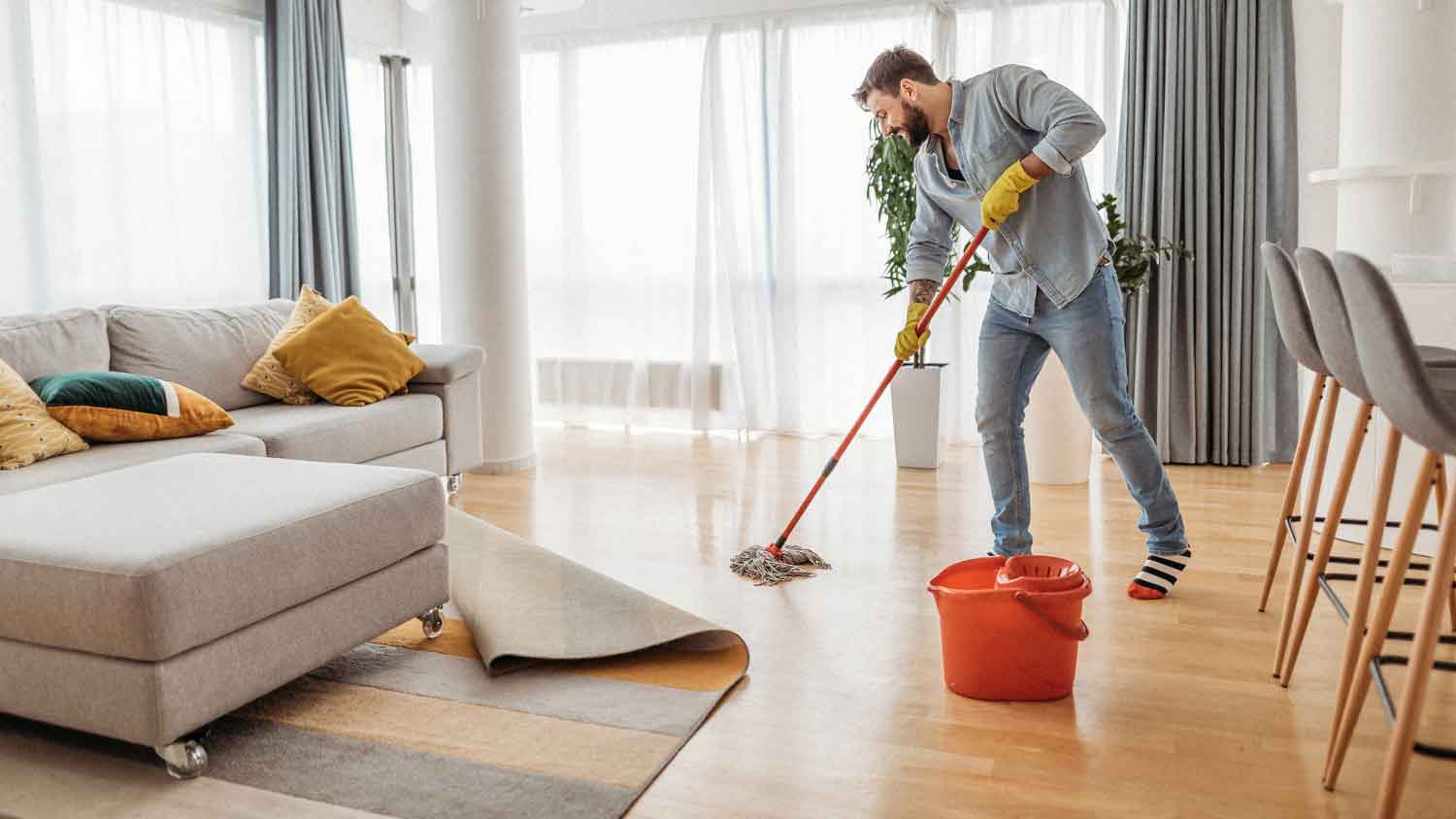4 Common Vacuum Cleaner Problems and How to Fix Them
There are a few reasons why your vacuum might be on the fritz


Vacuum cleaners are every homeowner’s first line of attack against flying pet fur and tracked-in dirt. So when your go-to weapon against grime is kaput, you might be tempted to wave the white flag.
But not every problem means you need to throw it out for a newer model. Here, we’ve broken down some of the most common vacuum cleaner problems and what you can do to save your machine.
1. Loss of Suction
Nothing’s more frustrating than spending minutes vacuuming a single spot for no visible results. If your vacuum seems to have lost its suction, there’s probably a clog somewhere in the system.
If your vacuum has a bag, check to make sure it isn’t full. If it’s not full, but the compartment that houses it has lots of dust and dirt inside, that means there is likely a hole in your bag and it’s time to replace it. For a bagless vacuum, check the seals on the debris container. If they are cracked or look damaged and dried out, it may be time to replace them.
Whether your vac is bagless or not, your vacuum cleaner needs to be cleaned. Most vacuum cleaners have multiple filters that can become clogged. A clog in a filter means there’s not enough air going through the machine to get the suction you need.
Or, the problem can be in your machine’s hoses. Check them for clogs and inspect the intake valve for any debris build-up or damage like cracks and holes. This could be a sign you need to replace these parts.
2. There’s a Burning Smell or the Beater Bar Isn't Moving
If there’s a burning smell while you’re vacuuming, or you notice that the beater bar isn’t moving, chances are you have a broken belt that needs to be replaced.
But don’t worry, this isn’t something you need to go see a professional about. You can buy the replacement belts from most vacuum or hardware retailers for $3 to $20, depending on the type of vacuum.
3. The Vacuum Shuts Off
In most vacuums, when the motor begins to run too hot, there’s a feature that immediately shuts off to keep it from burning out. It’s the same type of sensor that turns off your blender when you have too much ice inside.
This sensor can be triggered if a hose is clogged, or if you have the wrong surface setting selected—such as if you set the machine to a wood floor setting while vacuuming a deep shag carpet. Both of those are pretty easy fixes: Simply clean your clogs and/or change your settings, and problem solved!
If you are using a handheld vacuum, make sure that the battery is connected correctly to the machine. If it’s loose or installed incorrectly, it won’t be able to properly power the vacuum and will shut off.
4. The Vacuum Won’t Turn On at All

You go to flip the on switch and then: Nothing. First things first, make sure the vacuum is actually plugged in. Next up, examine the cord itself for faults. If you spot damage, it’s time to bring it in for repairs.
Another common reason vacuums won’t start? Faulty power switches. If you have checked all your other options and nothing is working, this might be the problem. It’s another one that a vacuum repair professional in your area can solve.
Other Broken Vacuum FAQs
Can I vacuum up construction debris with my home vacuum?
Something that can really damage your vac is vacuuming up construction debris. It isn’t the big nails that hurt the machine, either—it’s that huge volume of fine particle dust. That dust can get sucked into the motor of your vacuum cleaner and burn it out.
Why is my vacuum making a high-pitched squeal?
If your vacuum is working but making a very high-pitched squeal, this is another indicator that you have an airflow issue. Remove and clean your hoses and filters or replace them as needed to make the screeching stop.
How much does it cost to have a vacuum repaired?
Expect to spend between $15 and $55 an hour to have your vacuum cleaner serviced or repaired. A belt replacement will cost between $8 and $15 and a basic vacuum cleaner cleaning costs $25 to $45.





- Why Is My Vacuum Not Suctioning? 10 Troubleshooting Tips
- 7 Tips for Vacuuming Your Stairs to Get Dust-Free Results
- Why Your Vacuum Won't Turn On: 9 Potential Reasons
- 8 Tips to Learn How to Vacuum the Right Way
- 10 Tips to Make Vacuuming Your Whole Home a Breeze
- How to Adjust Your Vacuum Carpet Height Settings for Maximum Results
- Central Vacuum Maintenance: 4 Essential Tasks and How to Prevent Issues
- Is a Central Vacuum System Right for Your Home? Learn Pros, Cons, Cost, and More
- Get the Lowdown on Central Vacuum Systems: Are They Worth It?
- Who Should You Call to Install a Central Vacuum System?














